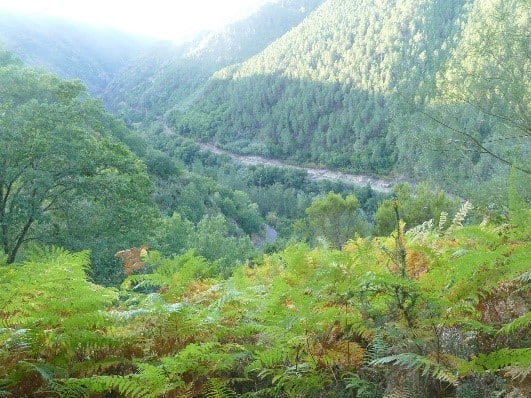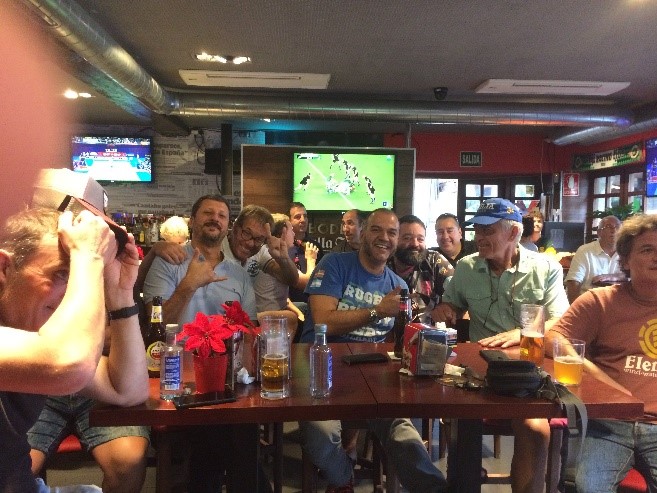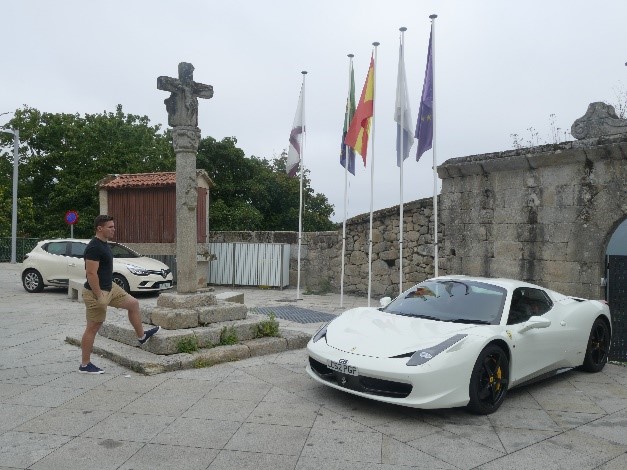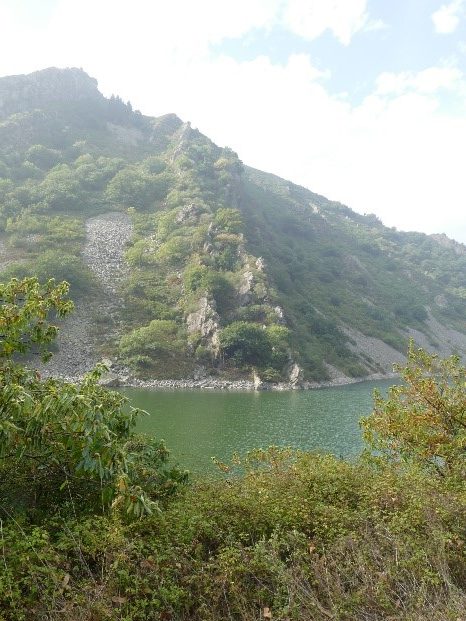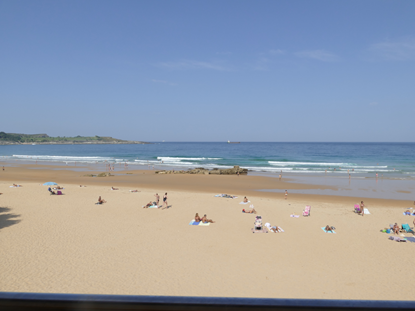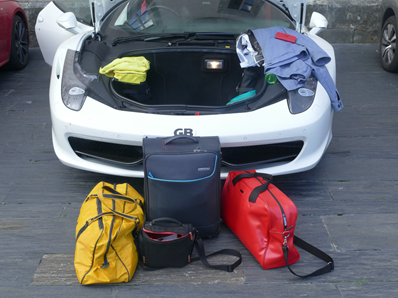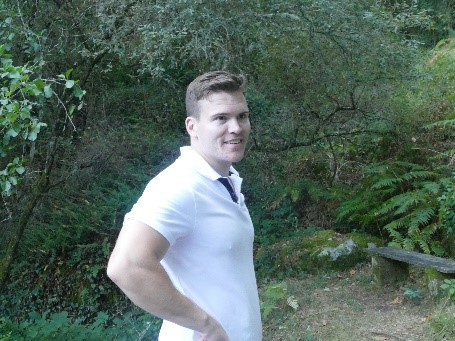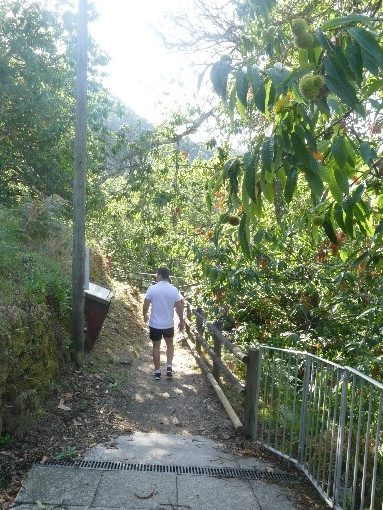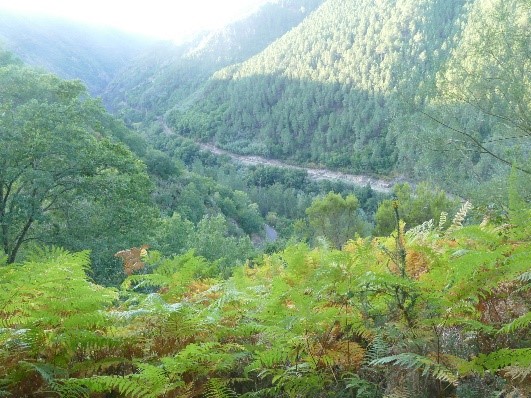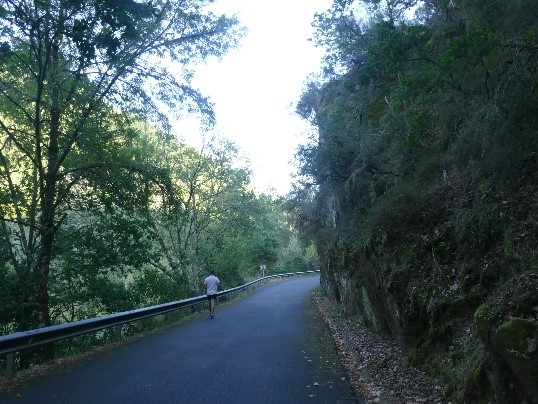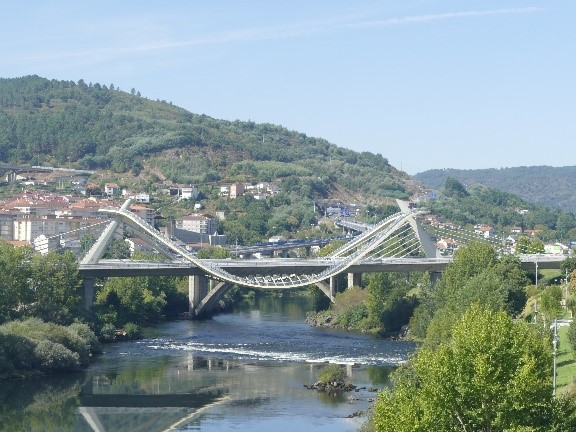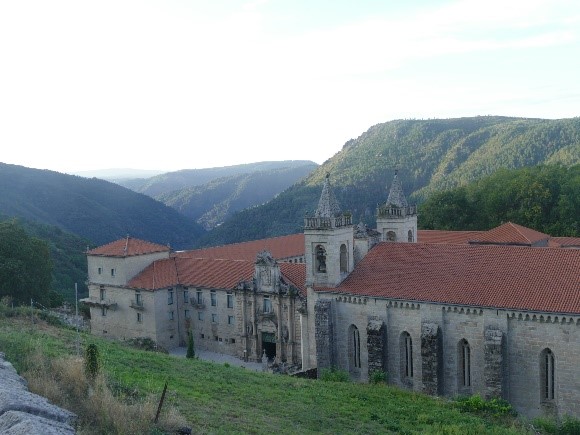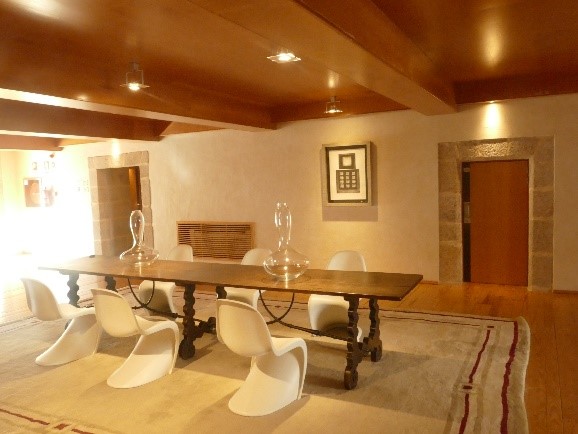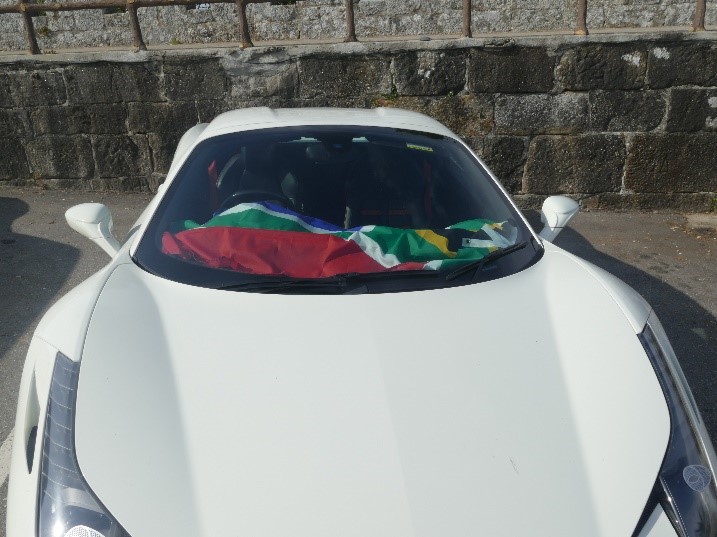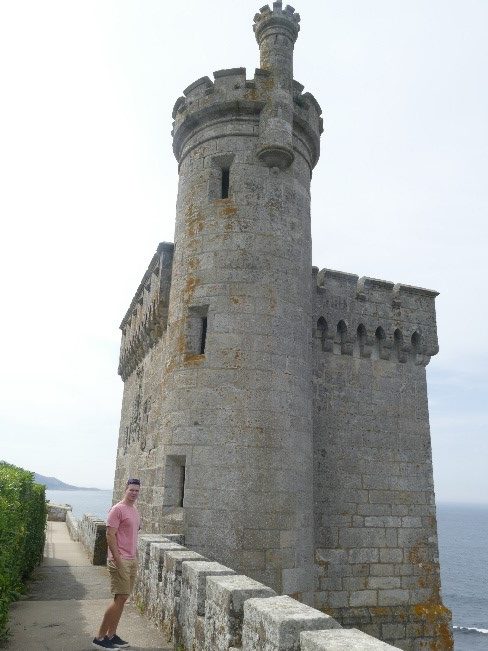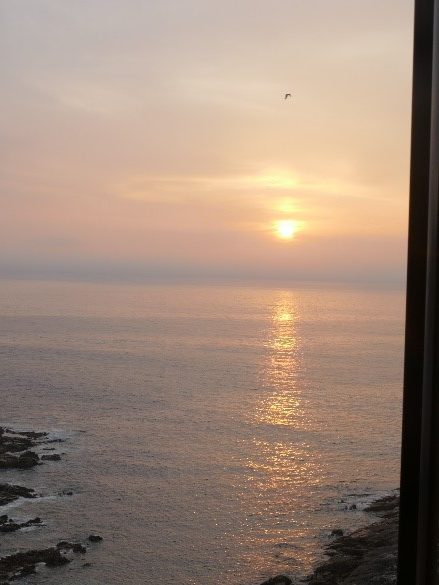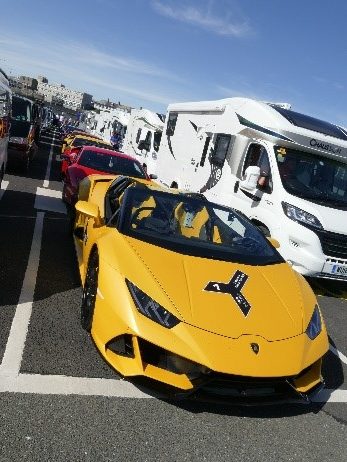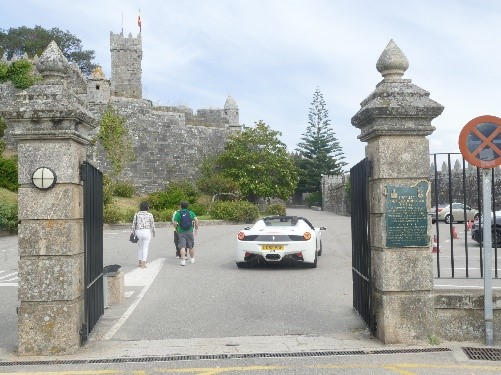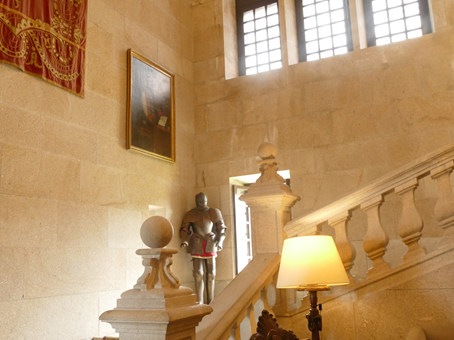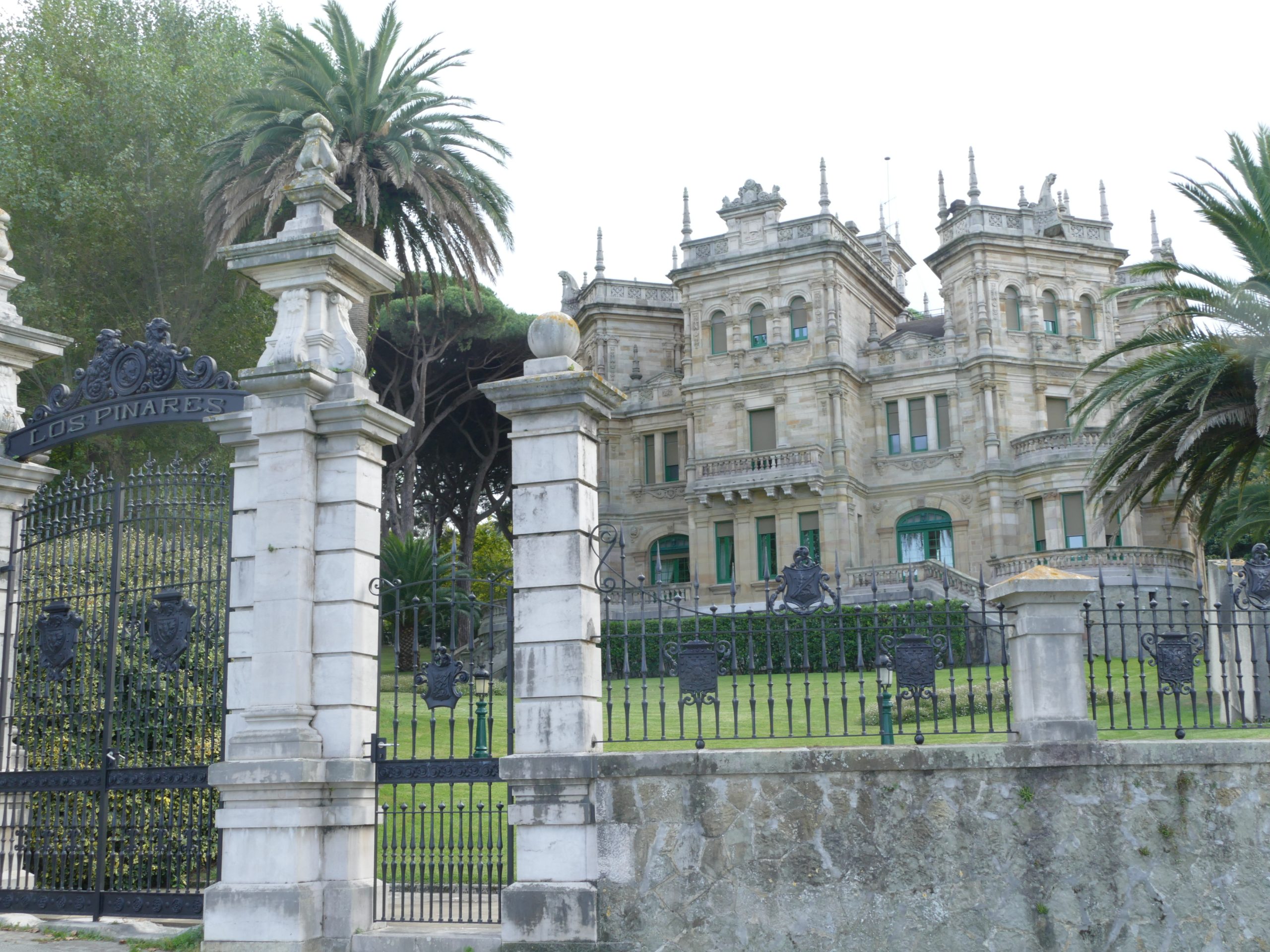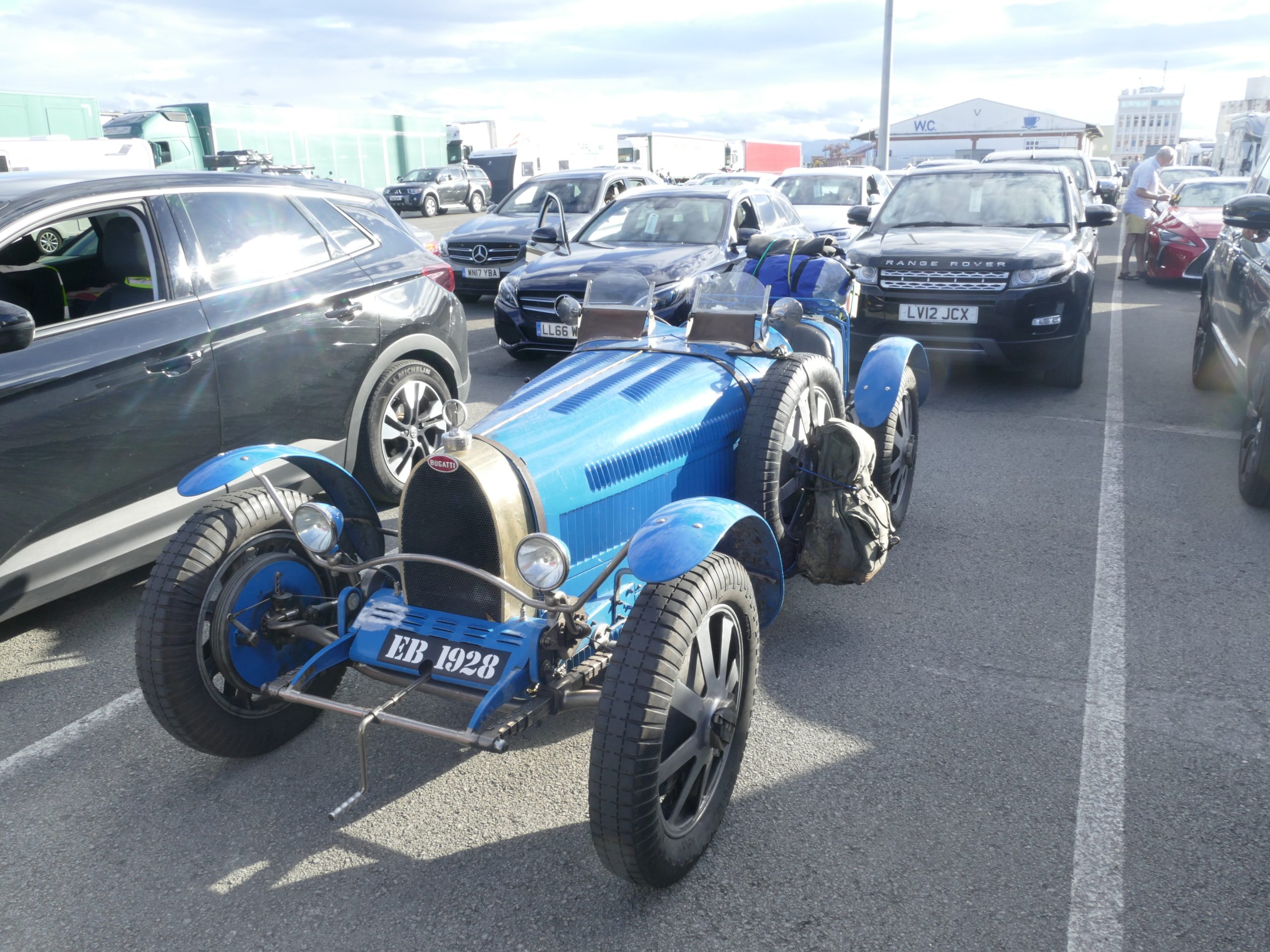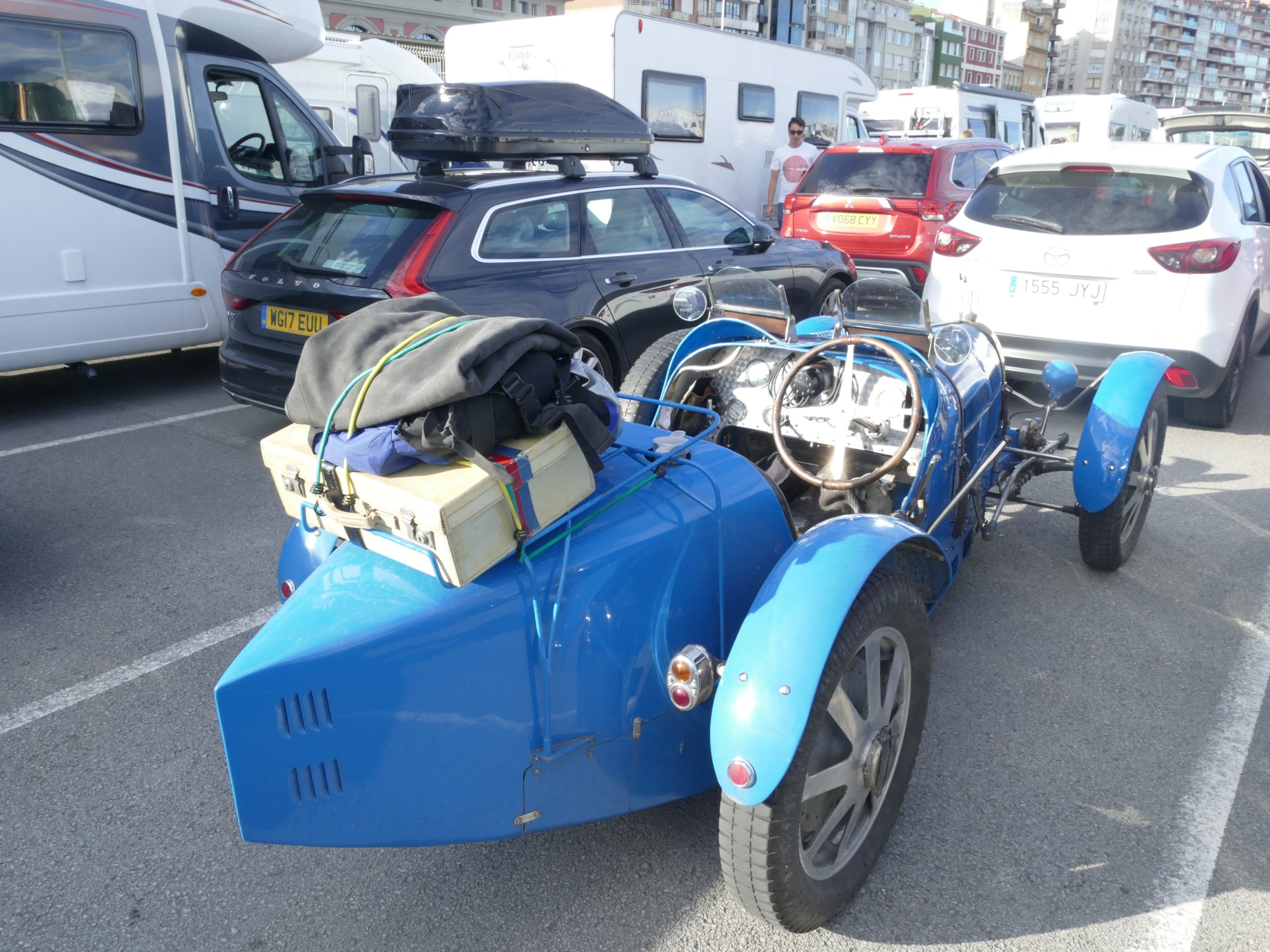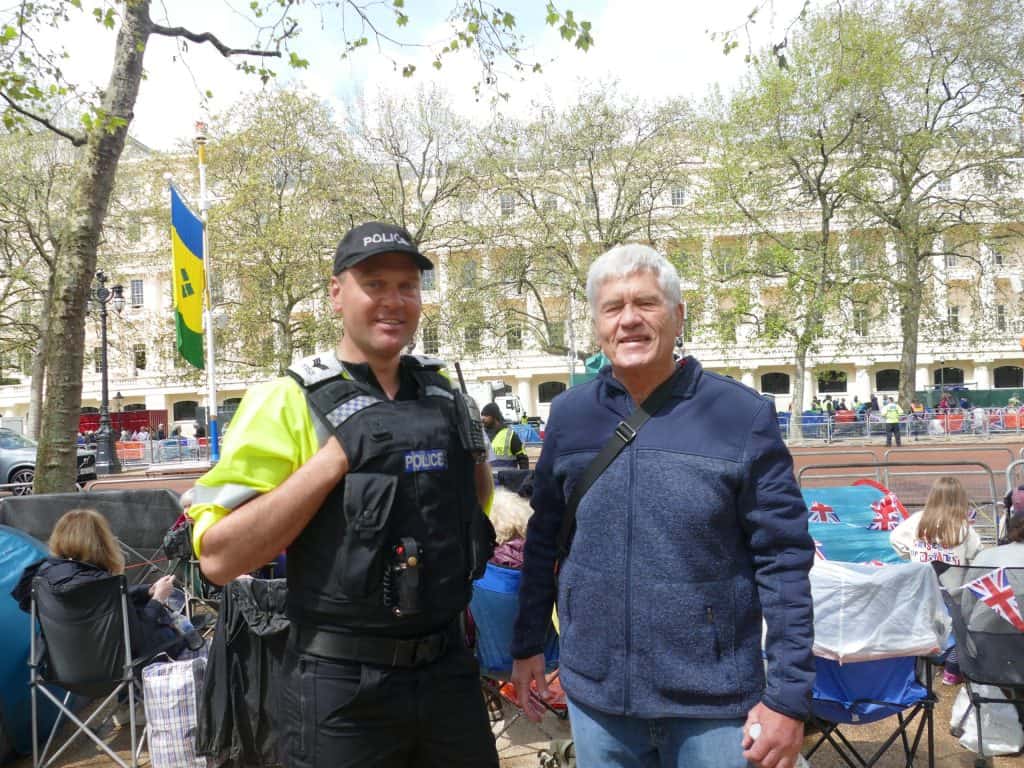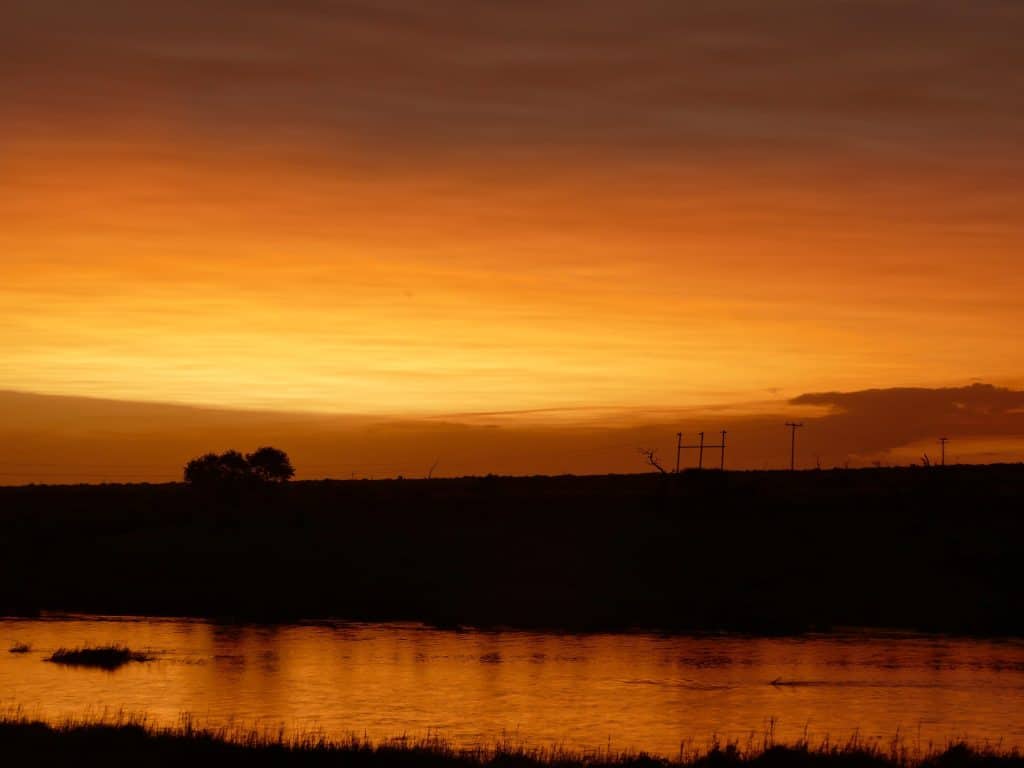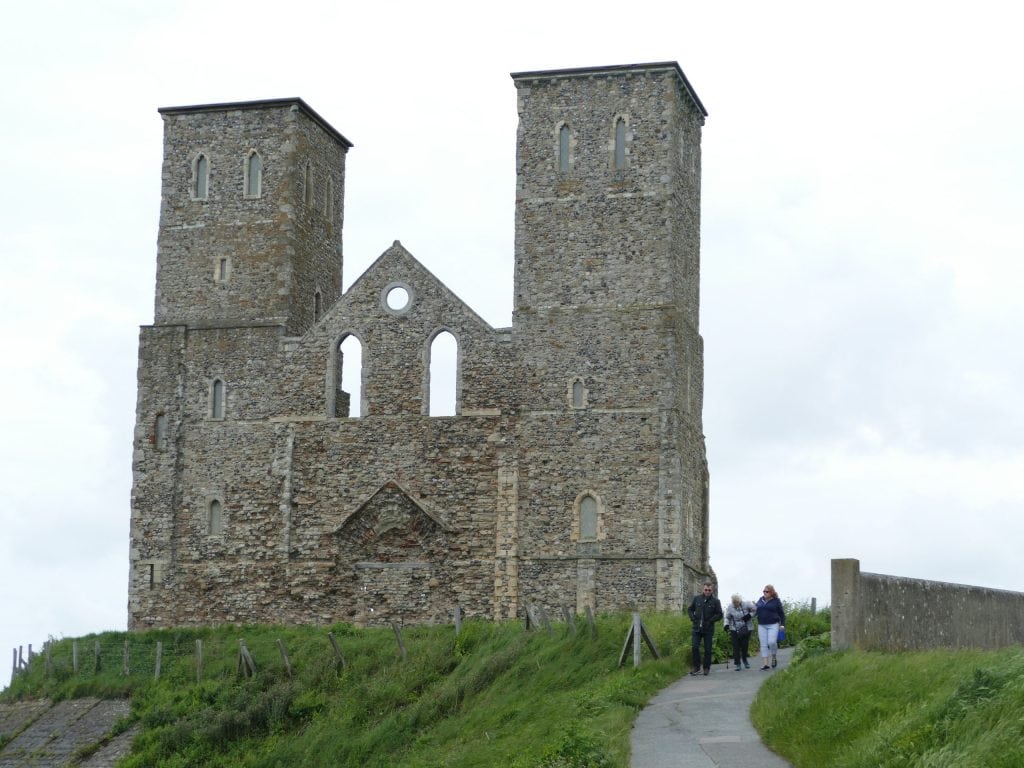We – my sons and I – try to go on one serious car trip or do one serious activity every year. In the past we have gone on track days at the famous Goodwood Race Circuit, done a hill-climb in the Cotswolds or have gone to the Le Mans Classic in France. This year it was the beautiful mountains, deep green valleys and dramatic Atlantic coastline of northern Spain that attracted us. A few of my patients, who are classic car enthusiasts, have been telling me how pleasant it is to drive on the quiet roads in the spectacular peaks of the Picos de Europe National Park. They also recommended staying in the Paradores hotels whilst on road trips over there. It all sounded very enticing, but I was a bit taken aback when I realised that the Paradores are run by the state. It sounded like grey buildings, poor service and bad food, I thought. However, the Paradores chain of hotels is the complete antithesis of bland and indifferent, because they are in historic buildings. When you decide to stay in a parador, you might end up in a Castilian castle, renovated monastery or former royal hunting lodge. The first parador was opened in 1926 and they have since managed to build up a reputation for excellent service and top-class local cuisine in stunning locations.
As I was driving to the harbour city Plymouth, I could not help but reminisce about the 45 years of driving classic sports cars, since my first Lamborghini, when the MD of Lamborghini in England was a patient of ours in Putney in London. Yet, I was still restless and bought a new Ferrari to take back home in 1976. Back in South Africa it was the early morning breakfast runs organised by the Ferrari club along the open roads of the Magaliesberg area, the weekends in the Lowveld or the self-organised sprints on the relative deserted highway to Bronkhorstspruit that stood out. My long-term friendship with fellow Ferrari aficionados Dawie Theron and Johan Meyer has been valuable, since cars may come and go, but friends remain. I am due to retire in the near future, so the run of exotic steeds is about to end abruptly, and that thought made our journey even more special.
I joined the so-called Supercar queue for the 24-hour ferry. I noticed 12 Lamborghinis in the same row, to my surprise! Another row is taken up by classics from the 70s and 80s, like Mercedes Benz SLCs, BMW Coupes and Ford Escort Mexico’s. Loading the massive 24-hour ferry took quite a while, as it carries 2 400 passengers and can carry 650 cars. Once on board, there was quite a lot to do, as there are numerous restaurants and bars, a movie theatre and even a swimming pool.
We arrived the next afternoon in Santander, the capital of Asturias and Cantabria. I had to rush to fill up with fuel and pick up my son at the airport. This forced me to use the Ferrari’s satnav for the first time, all the while concentrating to drive on the “wrong” side of the road. Our timing worked out nicely as I arrived about 15 minutes after he had cleared passport control. I was quite happy for Simon to take the wheel and use his phone to find a suitable meal, as we were quite hungry by then. We ended up in a smallish town called Luarca, where we had to wait until 21:30 for the La Tiza Gastrobar to open. For us oldies 21:30 sounds like bedtime, really. We ended up sharing two colourful dishes called “bull’s tail in chocolate sauce” and pork neck with something unusual like aubergines. Both dishes were delicious, but not filling enough for our “Boere appetites”, so we ended up buying some traditional snacks at a late-night shop. Our first hotel was small, intimate and friendly with a lovely view.
The next day was our longest trip for a single day, all along the rugged Atlantic coastline towards a town called Baiona in the province of Galicia. In 1493 this town was the first to hear about the discovery of the New World as one of Christopher Columbus’s caravels docked here on the way back. Our first parador was the magnificent Castle of Monterreal, a place where history and legends abound, as many different cultures and civilisations left their imprint. The construction of the original building started somewhere in the 12th century and now the castle and fortress walls occupy some 18 hectares. Through the centuries numerous Catholic kings used the castle to defend and control this part of the Rias Baixas coastline. As you enter reception, the huge stone staircase and splendid chandelier give it a regal feeling.
The whole place was heaving with activity because a medical conference was held there. The elegant common rooms were crowded with delegates who were registering for lectures or courses and with long tables that displayed medical instruments and tools. I used the opportunity to display South Africa’s national flag on the Ferrari’s dashboard in view of the Rugby World Cup, as a lot of people were also coming and going in the large carpark. After a long walk along the fortified walls, we went for a leisurely swim in the huge pool, which strangely enough was empty even though it was a warm afternoon.
We headed inland again on the Wednesday, all along the Mino River Valley. We stopped in a town called Ourense that is well-known for its geothermal hot springs. The original stone bridge across the Mino River – known as the Ponta Vella – was built by the Romans. The town is on ancient pilgrim routes, most important of these the route from Seville to Santiago de Compostela. We could not resist a long walk along the shady riverbanks – and ended retracing our steps, as I mistakenly thought that I had lost my sunglasses along the way.
We tuned the satnav in for the next destination but were taken for a wild goose chase because it turned out that there were two Santo Estevos on different sides of the mountain. We ended driving slowly, for what seemed ages, through never-ending forests on small winding mountain roads. We had the roof down and all impatience evaporated as we started to enjoy the smells and scents of all the different plants and trees of this green landscape. Eventually, we approached our destination, the remote and magnificent Monastery of Santo Estevo De Ribas De Sil. My first impression was to wonder how on earth they managed to erect this huge and wonderful building in such mountainous terrain so far from the nearest town. After all, the earliest documented history of this monastery dates back to the year 921, when the reigning king gave the Abbot Franquila a “ruined and abandoned territory” to build a basilica and monastery there.
After checking in, we decided to go for a hike in the surrounding forests on the steep mountain slopes. Simon took along one of those vague little local maps that is supposed to show the different walking routes. We set off quite enthusiastically, and we walked and climbed and walked and climbed. It seemed to go on forever, but after more than two and a half hours we got back to our lovely room. By then my Garmin Fitbit recorded 28 000 steps and 85 staircases! No beer has ever tasted so good. The open-air dining room is in an overhanging section that overlooks the vast forests on the steep slopes.
Our route on Thursday took us further inland over open, flat country in an eastern direction towards the town Corias, where our last parador’s main feature is a lovely basement swimming pool. We decided to eat out and walked quite far through a poorer part of town to a relatively plain but friendly restaurant that served delicious steaks (which we could not finish).
Our last drive to Santander was again through spectacular mountains and valleys with free-flowing rivers. When you encounter so many beautiful views, it is tempting to want to stop every few minutes to just take it in. We arrived relatively early in Santander, checked in quickly and went down to the beach for a swim at the beach, which to our delight was wide and sandy.
Our hotel was in a lovely part of town with the leafy esplanade stretching for kilometres along the beachfront. At one of the beach cafes, run by a local with an American accent, we had a delicious octopus in an orange sauce – no doubt some local delicacy. The owner explained that he had spent a few years in Miami, but that he had missed his hometown too much and therefore returned.
I was on my own on the last day as Simon flew back to the UK the previous evening. I was determined to see the Springboks playing the All Blacks and made my way to a nearby sports bar. To my surprise the place was packed, even though Spain wasn’t playing in the Rugby World Cup. The enthusiastic Spanish fans were friendly and welcoming, even those with All Black T-shirts on. I became quite friendly with a few of them and the one guy told me that he would have worn his Springbok T-shirt, but he had gained a bit of weight and could no longer fit into it. It was time to take the ferry back to the UK, and this time there was a different surprise in the queue: a Type 35 Bugatti from the 1930’s, in the traditional French racing blue colour. I have never seen such a valuable car (worth more than ₤2 million) driven on a public road, and wondered if it was not a well-made replica. However, it certainly looked authentic and the other onlookers agreed.
The 24 hours on the Cap Finistere gave me plenty of time to digest all the sights and impressions of northern Spain, its stunningly scenic beauty, the very different but classy paradors with their unique sense of history, the variety of forest fragrances that we enjoyed in slow motion on the narrow mountain roads, the friendly, warm people and the long pre-winter swim in the Atlantic surf.
But the journey was also a bonding process for the two of us, where for a change we had time to discuss the issues, problems and ideals of our very different life stages. I cannot wait to return next summer.



